




A branch, sometimes called a ramus in botany, is a stem that grows off from another stem, or when structures like veins in leaves are divided into smaller veins. [1]





A branch, sometimes called a ramus in botany, is a stem that grows off from another stem, or when structures like veins in leaves are divided into smaller veins. [1]
In Old English, there are numerous words for branch, including seten, stofn, telgor, and hrīs. There are also numerous descriptive words, such as blēd (that is, something that has bled, or "bloomed", out), bōgincel (literally "little bough"), ōwæstm (literally "on growth"), and tūdornes (literally "offspringing"). Numerous other words for twigs and boughs abound, including tān, which still survives as the "-toe" in mistletoe. [2]
Latin words for branch are ramus or cladus. The latter term is an affix found in other modern words such as cladodonts (prehistoric sharks with branched teeth) or cladogram.
Large branches are known as boughs and small branches are known as twigs. [3] The term twig usually refers to a terminus, while bough refers only to branches coming directly from the trunk.
Due to a broad range of species of trees, branches and twigs can be found in many different shapes and sizes. While branches can be nearly horizontal, vertical, or diagonal, the majority of trees have upwardly diagonal branches. A number of mathematical properties are associated with tree branchings; they are natural examples of fractal patterns in nature, and, as observed by Leonardo da Vinci, their cross-sectional areas closely follow the da Vinci branching rule.
A bough can also be called a limb or arm, and though these are arguably metaphors, both are widely accepted synonyms for bough. [4] [5] A crotch or fork is an area where a trunk splits into two or more boughs. A twig is frequently referred to as a sprig as well, especially when it has been plucked. [6] Other words for twig include branchlet, spray, and surcle, as well as the technical terms surculus and ramulus. Branches found under larger branches can be called underbranches.
Some branches from specific trees have their own names, such as osiers and withes or withies , which come from willows. Often trees have certain words which, in English, are naturally collocated, such as holly and mistletoe, which usually employ the phrase "sprig of" (as in, a "sprig of mistletoe"). Similarly, the branch of a cherry tree is generally referred to as a "cherry branch", while other such formations (i.e., "acacia branch" or "orange branch") carry no such alliance. A good example of this versatility is oak, which could be referred to as variously an "oak branch", an "oaken branch", a "branch of oak", or the "branch of an oak tree".[ citation needed ]
Once a branch has been cut or in any other way removed from its source, it is most commonly referred to as a stick, and a stick employed for some purpose (such as walking, spanking, or beating) is often called a rod. Thin, flexible sticks are called switches , wands, shrags, or vimina (singular vimen).

Mistletoe is the common name for obligate hemiparasitic plants in the order Santalales. They are attached to their host tree or shrub by a structure called the haustorium, through which they extract water and nutrients from the host plant.
Galls or cecidia are a kind of swelling growth on the external tissues of plants. Plant galls are abnormal outgrowths of plant tissues, similar to benign tumors or warts in animals. They can be caused by various parasites, from viruses, fungi and bacteria, to other plants, insects and mites. Plant galls are often highly organized structures so that the cause of the gall can often be determined without the actual agent being identified. This applies particularly to insect and mite plant galls. The study of plant galls is known as cecidology.
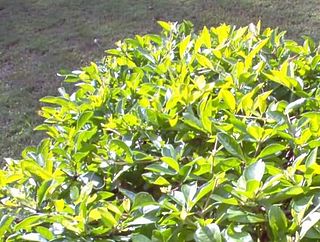
Pruning is a horticultural, arboricultural, and silvicultural practice involving the selective removal of certain parts of a plant, such as branches, buds, or roots.
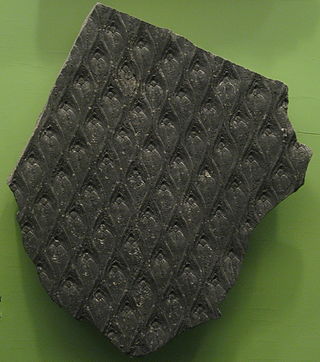
Lepidodendron is an extinct genus of primitive lycopodian vascular plants belonging the order Lepidodendrales. It is well preserved and common in the fossil record. Like other Lepidodendrales, species of Lepidodendron grew as large-tree-like plants in wetland coal forest environments. They sometimes reached heights of 50 metres, and the trunks were often over 1 m (3.3 ft) in diameter. They are often known as "scale trees", due to their bark having been covered in diamond shaped leaf-bases, from which leaves grew during earlier stages of growth. However, they are correctly defined as arborescent lycophytes. They thrived during the Carboniferous Period, and persisted until the end of the Permian around 252 million years ago. Sometimes erroneously called "giant club mosses", the genus was actually more closely related to modern quillworts than to modern club mosses. In the form classification system used in paleobotany, Lepidodendron is both used for the whole plant as well as specifically the stems and leaves.
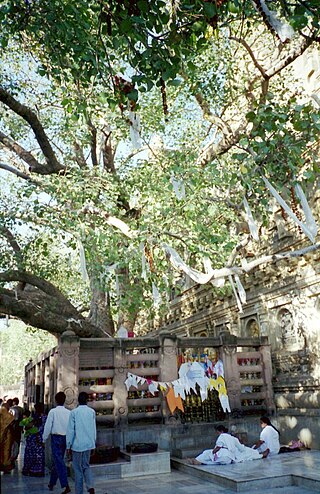
Trees are significant in many of the world's mythologies, and have been given deep and sacred meanings throughout the ages. Human beings, observing the growth and death of trees, and the annual death and revival of their foliage, have often seen them as powerful symbols of growth, death and rebirth. Evergreen trees, which largely stay green throughout these cycles, are sometimes considered symbols of the eternal, immortality or fertility. The image of the Tree of life or world tree occurs in many mythologies.

Salix nigra, the black willow, is a species of willow native to eastern North America, from New Brunswick and southern Ontario west to Minnesota, and south to northern Florida and Texas.
In natural science, subaerial has been used since 1833, notably in geology and botany, to describe features and events occurring or formed on or near the Earth's land surface. They are thus exposed to Earth's atmosphere. This may be contrasted with subaqueous events or features located below a water surface, submarine events or features located below a sea surface, subterranean events or features located below ground, or subglacial events or features located below glacial ice such as ice sheets.
In Norse mythology, Lævateinn is a weapon crafted by Loki mentioned in the Poetic Edda poem Fjölsvinnsmál. The name Lævateinn does not appear in the original manuscript reading, but is an emendation from Hævateinn made by Sophus Bugge and others.
Festive ecology explores the relationships between the symbolism and the ecology of the plants, fungi and animals associated with cultural events such as festivals, processions, and special occasions. Examples of topics are given below.
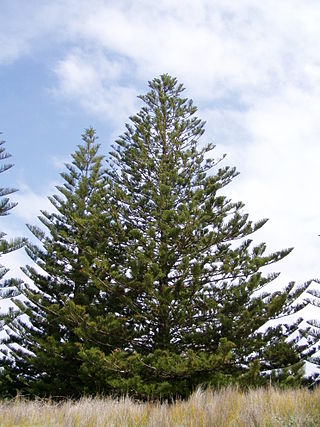
In botany, ramification is the divergence of the stem and limbs of a plant into smaller ones, i.e., trunk into branches, branches into increasingly smaller branches, and so on. Gardeners stimulate the process of ramification through pruning, thereby making trees, shrubs, and other plants bushier and denser.
The plant pathogenic fungus Leucostoma kunzei is the causal agent of Leucostoma canker, a disease of spruce trees found in the Northern Hemisphere, predominantly on Norway spruce and Colorado blue spruce. This disease is one of the most common and detrimental stem diseases of Picea species in the northeastern United States, yet it also affects other coniferous species. Rarely does it kill its host tree; however, the disease does disfigure by killing host branches and causing resin exudation from perennial lesions on branches or trunks.
This page provides a glossary of plant morphology. Botanists and other biologists who study plant morphology use a number of different terms to classify and identify plant organs and parts that can be observed using no more than a handheld magnifying lens. This page provides help in understanding the numerous other pages describing plants by their various taxa. The accompanying page—Plant morphology—provides an overview of the science of the external form of plants. There is also an alphabetical list: Glossary of botanical terms. In contrast, this page deals with botanical terms in a systematic manner, with some illustrations, and organized by plant anatomy and function in plant physiology.

A stem is one of two main structural axes of a vascular plant, the other being the root. It supports leaves, flowers and fruits, transports water and dissolved substances between the roots and the shoots in the xylem and phloem, photosynthesis takes place here, stores nutrients, and produces new living tissue. The stem can also be called halm or haulm or culms.
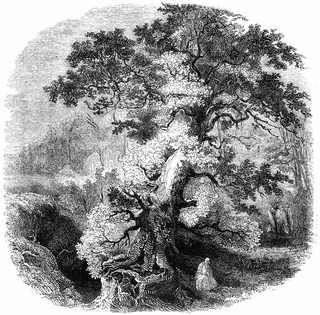
Many types of trees found in the Celtic nations are considered to be sacred, whether as symbols, or due to medicinal properties, or because they are seen as the abode of particular nature spirits. Historically and in folklore, the respect given to trees varies in different parts of the Celtic world. On the Isle of Man, the phrase 'fairy tree' often refers to the elder tree. The medieval Welsh poem Cad Goddeu is believed to contain Celtic tree lore, possibly relating to the crann ogham, the branch of the ogham alphabet where tree names are used as mnemonic devices.
Sacred herbs are herbs that are considered sacred in some religions. Herbs such as myrrh, ague root, and frankincense in Christianity, Nine Herbs Charm in the partially Christianized Anglo-Saxon pagan, and a form of basil called tulsi— revered as a Hindu goddess for its medicinal value—are utilized in their rites and rituals.

Alangium polyosmoides is a rainforest tree of eastern Australia. It occurs on a variety of different soils, generally close to the coast. Found from Minmi near Newcastle to as far north as the McIlwraith Range in far north eastern Australia. It may be seen as a common understorey plant at Wingham Brush Nature Reserve.

Carpodetus serratus is an evergreen tree with small ovate or round, mottled leaves with a toothy margin, and young twigs grow zig-zag, and fragrant white flowers in 5 cm panicles and later black chewy berries. It is an endemic of New Zealand. Its most common name is putaputāwētā which means many wētā emerge - referring to the nocturnal Orthoptera that live in holes in the trunk of this tree made by Pūriri moth caterpillars. Regional variations on the name also refer to this insect that lives and feeds on it such as kaiwētā, and punawētā. The tree is also sometimes called marbleleaf. It is found in broadleaf forest in both North, South and Stewart Islands. It flowers between November and March, and fruits are ripe from January to February.
Tree volume is one of many parameters that are measured to document the size of individual trees. Tree volume measurements serve a variety of purposes, some economic, some scientific, and some for sporting competitions. Measurements may include just the volume of the trunk, or the volume of the trunk and the branches depending on the detail needed and the sophistication of the measurement methodology.
Leucostoma canker is a fungal disease that can kill stone fruit. The disease is caused by the plant pathogens Leucostoma persoonii and Leucostoma cinctum (teleomorph) and Cytospora leucostoma and Cytospora cincta (anamorphs). The disease can have a variety of signs and symptoms depending on the part of the tree infected. One of the most lethal symptoms of the disease are the Leucostoma cankers. The severity of the Leucostoma cankers is dependent on the part of the plant infected. The fungus infects through injured, dying or dead tissues of the trees. Disease management can consist of cultural management practices such as pruning, late season fertilizers or chemical management through measures such as insect control. Leucostoma canker of stone fruit can cause significant economic losses due to reduced fruit production or disease management practices. It is one of the most important diseases of stone fruit tree all over the world.

Ficus coronulata, commonly known as the peach-leaf fig, and in the Northern Territory as river fig and crown fig, is one of several fig species commonly known as sandpaper figs. It is native to Western Australia and the Northern Territory.